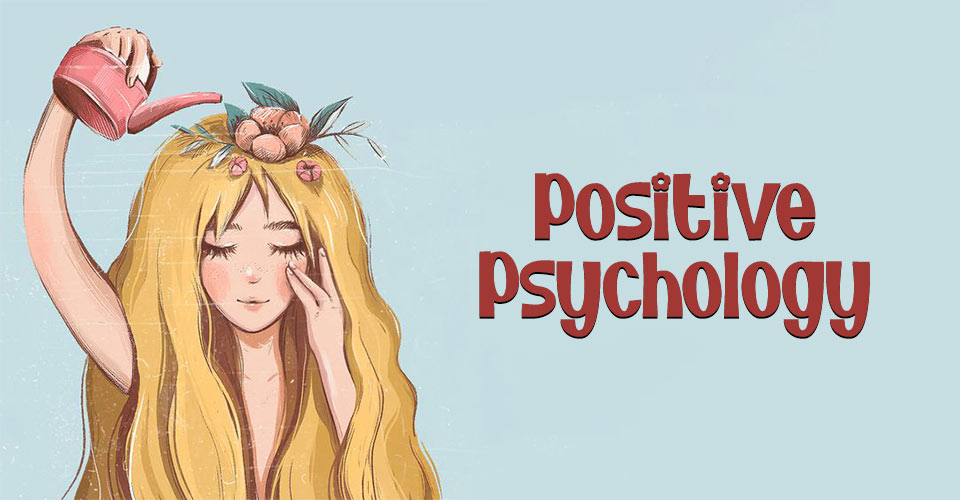Positive psychology is the scientific study of what makes life worthy, purposeful, and fulfilling — focusing on both individual and societal well-being.
What Is Positive Psychology?
Positive psychology is one of the emerging branches of psychology that studies optimal experience, well-being, and ways to live prospering lives 1 Phan, H. P., Ngu, B. H., Chen, S. C., Wu, L., Shi, S. Y., Lin, R. Y., Shih, J. H., & Wang, H. W. (2020). Advancing the Study of Positive Psychology: The Use of a Multifaceted Structure of Mindfulness for Development. Frontiers in psychology, 11, 1602. https://doi.org/10.3389/fpsyg.2020.01602 . It challenges the assumptions of the “disease model 2 Jeste, D. V., Palmer, B. W., Rettew, D. C., & Boardman, S. (2015). Positive psychiatry: its time has come. The Journal of clinical psychiatry, 76(6), 675–683. https://doi.org/10.4088/JCP.14nr09599 ” that focuses on dysfunctional behavior and strives to help people work on their existing strengths instead.
The father of positive psychology 3 Seligman M. E. P. (2019). Positive Psychology: A Personal History. Annual review of clinical psychology, 15, 1–23. https://doi.org/10.1146/annurev-clinpsy-050718-095653 , American psychologist Martin Seligman formulated the theory in the 1980s—drawing from the Greek concept of eudaimonia (meaning “good spirit”) and certain ideas of humanistic psychology.
The Seligman positive psychology theory holds that we should discover, cherish, and employ our unique combination of “signature strengths”—along with ethics, motivation, and gratitude—to lead a pleasant, fulfilling, and meaningful life. These signature strengths may include humanity, temperance, courage, justice, and persistence.

PERMA Model
Seligman’s theory has five main elements 4 Kern, M. L., Waters, L. E., Adler, A., & White, M. A. (2015). A multidimensional approach to measuring well-being in students: Application of the PERMA framework. The journal of positive psychology, 10(3), 262–271. https://doi.org/10.1080/17439760.2014.936962 , including
- Positive emotions: Experience of optimism, gratitude, hope, and contentment.
- Engagement: Involvement in enjoyable hobbies and activities of interest.
- Relationship: Forming and maintaining work-related, familial, romantic, or platonic social connections.
- Meaning: Finding purpose and meaning in life.
- Accomplishments: Achievement of goals and the pursuit of success and mastery.
What Are Positive Psychology Activities?
Positive psychology activities include certain exercises and tools geared toward nurturing our key strengths and virtues. There are different ways to use positive psychology that can serve to enhance our positive emotions, positive individual traits, and our interactions with positive social institutions.
Some of the most effective and common positive psychology exercises and tools are:
1. Gratitude Journaling
Maintaining a gratitude 5 Sansone, R. A., & Sansone, L. A. (2010). Gratitude and well being: the benefits of appreciation. Psychiatry [Edgmont (Pa. : Township)], 7(11), 18–22. journal can help us recognize feelings of thankfulness and appreciation which have been proven to increase positive emotions and well-being.
Read More About Gratitude Here
2. Designing a day
Designing a daily schedule that involves a healthy diet, quality sleep, adequate exercise, and opportunities for socialization does wonders for our positive mindset and mental health. This is also known as setting the agenda for the day.
3. Practicing random acts of kindness
Practicing gratitude and showing it to others can go a long way in enhancing our well-being 6 Otake, K., Shimai, S., Tanaka-Matsumi, J., Otsui, K., & Fredrickson, B. L. (2006). HAPPY PEOPLE BECOME HAPPIER THROUGH KINDNESS: A COUNTING KINDNESSES INTERVENTION. Journal of happiness studies, 7(3), 361–375. https://doi.org/10.1007/s10902-005-3650-z . Small gestures like helping someone with their chores or sending “thank you” notes and letters can have a big impact on our mood and satisfaction with our lives and the people around us.
4. Mindfulness exercises
Mindfulness techniques and activities like meditation, yoga, etc. can help decrease stress as well as risks of mental and physical health conditions.
Read More About Mindfulness Here
5. Values in Action Inventory of Strengths (VIA-IS)
The VIA-IS 7 Ng, V., Cao, M., Marsh, H. W., Tay, L., & Seligman, M. E. P. (2017). The factor structure of the Values in Action Inventory of Strengths (VIA-IS): An item-level exploratory structural equation modeling (ESEM) bifactor analysis. Psychological assessment, 29(8), 1053–1058. https://doi.org/10.1037/pas0000396 is one of the most commonly used tools in positive psychology and positive psychotherapy. It’s a questionnaire that allows people to identify their dominant strengths, allowing them to focus their energy and attention on using their inherent strengths in their daily life, instead of getting distracted by the skills or traits they may feel they are lacking.
Positive Psychology Examples
Some examples of how you can use positive psychology in daily life are discussed below.
1. Pick an empty notebook or a diary and turn it into your gratitude journal. Choose a time every day when you are relaxed and note down about three to five things that you are grateful for. Try to be descriptive about why you are thankful for those things.
2. Spend about 15 minutes every day envisioning (imagining/ writing/ speaking and recording) your ‘best possible future self’. Think of your goals, and how you would want to live.
3. Make a chart noting the activities you do every day along with the emotion you feel while doing it, the energy it consumes (on a scale of 10), and the strengths that the activity involves. This can help you take cognizance of your virtues and skills and improve self-confidence.

All of these activities are easy to implement at home and require minimal resources.
Positive Psychology In Mental Health
Positive psychology gives mental well-being 8 Bohlmeijer, E., & Westerhof, G. (2021). The Model for Sustainable Mental Health: Future Directions for Integrating Positive Psychology Into Mental Health Care. Frontiers in psychology, 12, 747999. https://doi.org/10.3389/fpsyg.2021.747999 the utmost importance when it comes to living a ‘disease-free’ life. It espouses health strategies that promote positive feelings, self-satisfaction, positive thinking, emotional management, and self-regulation.
This helps in finding the true meaning of happiness, spirituality, empathy, and forgiveness, as well as building strong social relationships.
The practice of positive psychology in a clinical setting draws from the support and regeneration of existing strengths and strives to ‘reorient’ people into developing the best qualities in life.
It has been incorporated into a number of therapies to treat symptoms of depression, anxiety, mood disorders, etc. It is also used to assist patients recovering from memory disorders and traumatic brain injury. The uses of positive psychology are evident in popular therapies like:
- Cognitive-behavioral therapy [Read more]
- Family therapy 9 Carr A. (1997). Positive practice in family therapy. Journal of marital and family therapy, 23(3), 271–293. https://doi.org/10.1111/j.1752-0606.1997.tb01036.x
- Positive psychotherapy, etc.
Benefits Of Positive Psychology
Some uses of positive psychology are also associated with:
- Healthy and responsible parenting, particularly positive parent-child relationships
- Better adjustment in school settings and peer groups
- General social and emotional well-being
- Optimism and prosocial behavior
- Reduced risks of coronary and cardiovascular diseases 10 Park, N., Peterson, C., Szvarca, D., Vander Molen, R. J., Kim, E. S., & Collon, K. (2014). Positive Psychology and Physical Health: Research and Applications. American journal of lifestyle medicine, 10(3), 200–206. https://doi.org/10.1177/1559827614550277 , etc.
- Healthier interpersonal relationships
Disadvantages Of Positive Psychology
Despite the inherent benefits of positive psychology, it is considered controversial in theory and practice. This can be attributed to the fact that:
- Clinicians and individuals have a subjective understanding of positive psychology.
- Overt optimism can be detrimental to health and therefore can appear as a negative quality.
- Sometimes, anxiety and stress are conducive to health and stability, albeit in moderate amounts. Removing attention from such processes completely can hamper our everyday functioning.
- The theory of positive psychology recognizes that happiness for its own sake is an elusive goal. Hence, seeking happiness with such an approach can lead to unhappiness.
Takeaway
Positive psychology is a relatively new field in psychology. However, its effective use in therapy and maintaining good-will are already proven. Experts are looking toward further research and practice to harness its benefits to combat serious mental and physical health conditions.
At A Glance
- Positive psychology is the scientific study of what makes life worthy, purposeful, and fulfilling.
- It was formulated by American psychologist Martin Seligman.
- It focuses on ways to achieve happiness, both at individual and societal levels.
- It can be used in several therapies to treat mental and physical health disorders.
- Common positive psychology examples include journaling, practicing gratitude, availing mindfulness exercises, etc.
Frequently Asked Questions (FAQs)
1. How effective is positive psychology?
Positive psychology is effectively employed in therapeutic practices and mental health treatment plans to improve physical and mental well-being. The impact of positive psychology is far-reaching and many people also turn to it for non-medical reasons—to experience happiness and develop optimism, gratitude, and altruism.
2. How can we practice positive psychology?
Positive psychology can be easily practiced through journaling, practicing gratitude, availing adequate exercises, etc.
3. How does positive psychology apply to life?
Positive psychology techniques can be used in everyday life for reducing stress and anxiety and increasing psychological resilience. It can also be used to promote personal growth, well-being, and quality of life.
4. How does positive psychology impact us daily?
Practicing common positive psychology techniques (such as gratitude journaling and mindfulness exercises) can do wonders for your mental and physical health on a daily basis.















